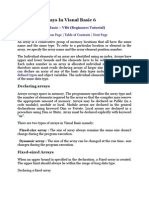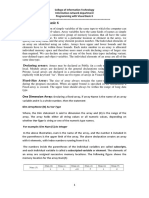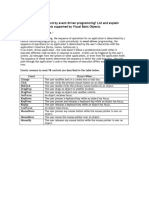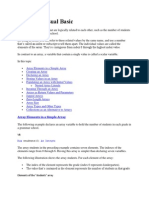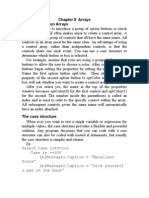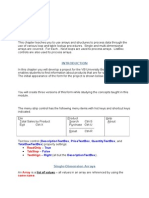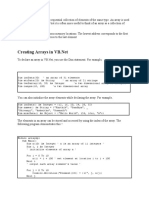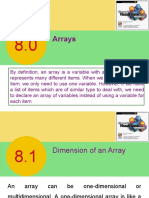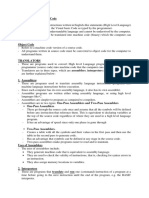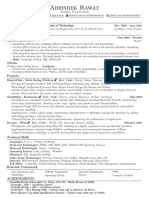0% found this document useful (0 votes)
53 views8 pagesData Structures
A data structure is a collection of data items stored together as a single unit. Common data structures include arrays, trees, linked lists, stacks and queues. Data structures can be static or dynamic. Static data structures have a fixed size set at compile time, while dynamic structures can vary in size at runtime. Arrays are an example of a static structure, as they have a predefined length. Dynamic structures like linked lists can grow and shrink as needed. The document then provides details on the characteristics, advantages and disadvantages of static and dynamic data structures.
Uploaded by
Taonaishe Hastings MuzavaziCopyright
© © All Rights Reserved
We take content rights seriously. If you suspect this is your content, claim it here.
Available Formats
Download as PDF, TXT or read online on Scribd
0% found this document useful (0 votes)
53 views8 pagesData Structures
A data structure is a collection of data items stored together as a single unit. Common data structures include arrays, trees, linked lists, stacks and queues. Data structures can be static or dynamic. Static data structures have a fixed size set at compile time, while dynamic structures can vary in size at runtime. Arrays are an example of a static structure, as they have a predefined length. Dynamic structures like linked lists can grow and shrink as needed. The document then provides details on the characteristics, advantages and disadvantages of static and dynamic data structures.
Uploaded by
Taonaishe Hastings MuzavaziCopyright
© © All Rights Reserved
We take content rights seriously. If you suspect this is your content, claim it here.
Available Formats
Download as PDF, TXT or read online on Scribd
/ 8



